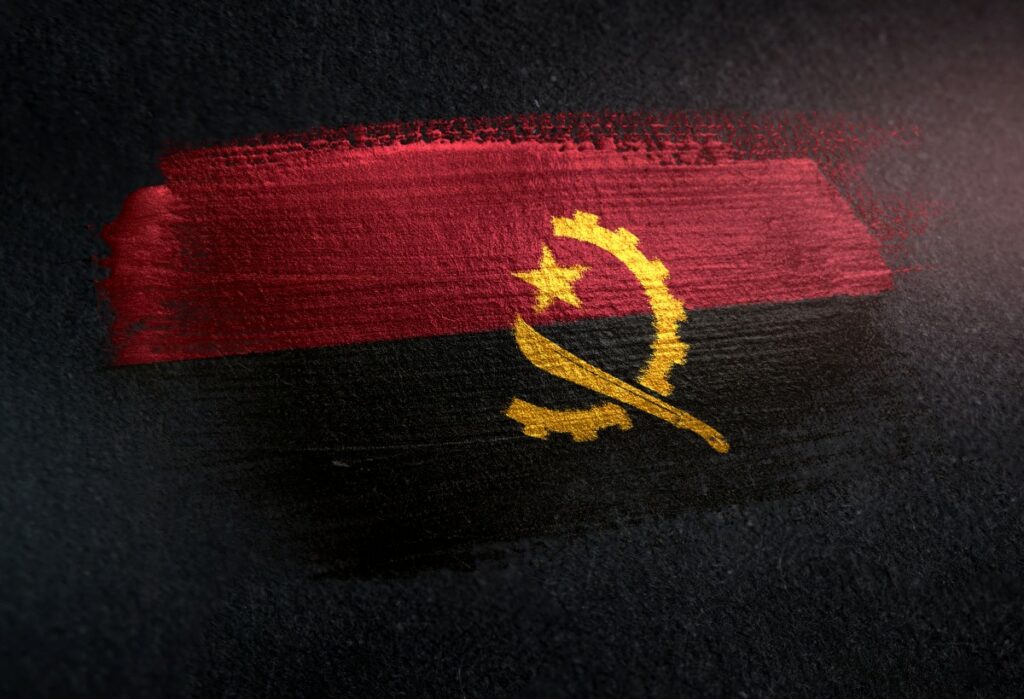- +352 444 222
- Monday-Friday 12:00-18:00
- 20, avenue Marie-Thérèse, 2132 Luxembourg


The José Eduardo dos Santos affair can undoubtedly be described as the most important case of embezzlement of public funds to have taken place on the African scene in the last decade. Allegedly responsible for embezzling 9.6 billion euros in public assets, hidden in several countries around the globe, and supported by foreign financial institutions, José Eduardo dos Santos has found himself at the heart of a large-scale corruption affair. This story requires a historical understanding, in order to grasp both its scope and its structural character.
For more than 40 years, Angola had to face several successive wars. First, in the war of independence against the Portuguese presence from 1961 to 1974. Then came the civil war between 1975 and 2002, pitting the National Union for the Total Independence of Angola (UNITA) against the Popular Movement for the Liberation of Angola (MPLA). The MPLA, backed by the Soviet Union and Cuba, illustrates how the Angolan civil war was nothing more than a typical Cold War proxy war. Its main objective was to enable a few powerful people to get their hands on the state apparatus, in order to appropriate the many resources present on the territory.
Indeed, while war has long prevented the economic development of a considerable part of the country, the state has been economically strengthened by the exploitation of resources, notably from oil and diamond mines. At the end of the war, with the disappearance of Soviet support, oil production became a major alternative to government financing and soared to 1 million barrels a day. The consequences of this model have had a lasting effect on Angola’s economy and politics. This enabled President Dos Santos, a former Marxist who was considered a national hero before turning autocrat, to set up a highly sophisticated system of clientelism. The aim was to reward the winners of the war, many of whom were generals, thus keeping them out of political power. By centralizing the economy around the executive and the army, while regionalizing the country’s economic development, Angola became Africa’s 3rd largest economy in 2013, without improving its human development index (HDI).
It is therefore from this Soviet heritage that we can base our understanding of the Angolan context, and grasp what, through a limited connection to the international economy and a lack of transparency, led to the nationalization of the country’s infrastructure and the concentration of the country’s wealth by the state and for the state. It is also the legacy of the Soviet-led economic system, which enabled Angola to maintain a highly corrupt and opaque system during José Eduardo Dos Santos’ 38-year presidency, creating considerable institutional alterations, both to the state and to the public.
The regime set up by President José Eduardo Dos Santos, elected in 1979, was a centralized government with authoritarian tendencies. It allowed national resources to be appropriated by the president and his entourage, through the use of the government apparatus. This enabled him to extract private profits from the public economy, using legal and extra-legal methods, while enjoying a high level of discretion and a low level of accountability with regard to government spending.
The International Monetary Fund (IMF) estimates that during the Cold War, Dos Santos appropriated almost a billion dollars a year from the government budget. With the fall of the Soviet empire, we might have expected change, with the implementation of a process of economic liberalization. However, its abusive application has, on the contrary, served to reinforce corruption, through the sale of numerous state assets, at below-market prices, to members of the presidential patronage network. This was one of the many steps that enabled José Eduardo Dos Santos to secure a monopoly over the country’s resources. Indeed, a second step was taken in 2010, when a new constitution came into force to increase the powers of the outgoing president, allowing him to implement decisions by presidential decree. What’s more, in parallel with these reforms aimed at easing corruption in the country, the country’s oil production rose from 1 million to 2 million barrels a day, and its price from $20-30 to over $100 a barrel, giving Angola a GDP of $120 billion.
This is why the international community began to mobilize around the Angolan question, and very quickly put pressure on the executive to: increase the supply of public services, implement anti-corruption legislation, and promote transparency in the oil and financial sectors. However, although Angola has, as a result of this pressure, significantly improved its services in order to remain in formal compliance with international standards, and to guarantee its access to international markets, corruption has by no means disappeared. On the contrary, it has simply taken on other, admittedly more complex and subtle forms, in order to circumvent international laws.
The systemic and structural nature of this centralized patronage system can be seen in the resistance of the Dos Santos system to the various attempts to weaken it, and its establishment at the heart of every vital organ of the state. It was in particular his support for the oil sector that enabled him to develop and flourish this polymorphous corruption in the country, involving companies controlled by the party elite and their relatives who prioritized their private interests, to the detriment of their responsibilities linked to their functions. In fact, all the “megaprojects” carried out by the government were directed by José dos Santos’ direct entourage, so as to concentrate the management of the regime’s resources on a restricted circle of individuals acting as a mini-government within the government.
For this reason, Angola has long been synonymous with corruption, having seen over 9.6 billion euros worth of public assets embezzled in countries such as Great Britain, Switzerland, Singapore and Bermuda. In addition, 715 cases of corruption, fraud, embezzlement and other financial crimes are being prosecuted in Angola. Dos Santos is therefore accused of being at the origin of one of the most corrupt countries in Africa, ignoring the concerns of its population while promoting the exploitation of public oil wealth in order to amass a colossal personal fortune.
However, the ex-president is not the only defendant at the heart of this scandal. Government officials, military officers and his children are also particularly targeted by accusations of personal enrichment, while the majority of the population still has no access to essential services, and lives below the poverty line.
The ex-president’s daughter Isabel Dos Santos, head of Sonangol, and his late husband Sindika Dokolo are also major players in this comedy. According to the “Luanda Leaks”, the woman who has long been described as both Africa’s richest woman[1 ] and her country’s most successful entrepreneur, managed to embezzle over a billion dollars in public funds. These would mainly come from the state-owned oil company and the diamond company, and would have been concealed and dispersed in over 400 companies around the world. What is even more scandalous is the role played by the international community in participating in these transactions, and in granting loans to Isabel dos Santos.
In addition, Isabel Dos Santo’s brother and former head of the Angolan Sovereign Wealth Fund, José Filomeno Dos Santos, has also been charged, and sentenced to five years’ imprisonment in 2020 for diverting $500 million from the central bank to the London account of a Crédit Suisse branch.[2 ] The estimated embezzlement, however, amounts to $1.5 billion, out of the $5 billion he is said to have overseen between 2013 and 2018.
The new president, Joao Lourenço, elected in 2017, has embarked on a crusade against corruption. Indeed, anti-corruption is a top priority within the new government, which came into being following the fall in oil prices in 2014 (having lowered the country’s GDP to $89 billion), and growing insurgencies within the country in response to its deterioration. For this reason, President Lourenço began his term of office by dismissing all those close to the former president, all of whom held key positions at the head of the country’s institutions, public companies and security services. In addition, the new head of state has also decided to permanently remove the Dos Santos family, and other close associates in high-level positions, from the state in order to ensure better, more transparent governance.
However, although Joao Lourenço has now managed to regain control of $3.3 billion of the Angolan Sovereign Wealth Fund, out of the $5 billion managed by José Filomeno Dos Santos, and Isabel dos Santos has to return 422 million euros to the state-owned Sonangol company, the president is constantly hampered by the system put in place by his predecessor. In fact, before his departure, the outgoing president ensured the protection of his family and his immunity, by appointing loyal followers to key positions guaranteeing their prosperity. It’s a tug-of-war between the two presidents, and a never-ending witch-hunt for Joao Lourenço, who finds himself having to purge every organ of the state, with a view to cleaning up the economy and recovering his assets. This also explains the new head of state’s imminent desire to break down the safeguards of the former government and attack the Dos Santos family.
Today, 5 years after the departure of José Eduardo Dos Santos, Angola is the second largest oil producer in sub-Saharan Africa. The country is trying to attract investors, as well as initiate economic diversification, to cushion the damage caused by the former president’s poor governance, which left a legacy of debt amounting to almost 90% of gross domestic product (GDP).
In line with this vision, Angola is increasing its borrowings from global financial institutions, notably the IMF, which in 2018 granted it the largest loan ever granted to an African state[3], amounting to $3.7 billion.
However, the fight against corruption is far from over, and promises to be more complex than expected. Indeed, there are still no tangible, credible results in terms of identifying and repatriating misappropriated public funds. On the one hand, this is linked to the fact that a large part of the capital has illegally left the country and evaporated in offshore or illicit financial circuits. On the other hand, a considerable proportion of this capital continues to flow into the global economy in the form of major recent investments. What’s more, the end of this massive detour of funds has the effect of undermining the GDP of certain countries that benefited from the payment of these funds into their territories. For all these reasons, it is only possible to observe a slight drop in Angola’s corruption index over recent decades.
Thus, despite a relentless fight against corruption, which is a guarantee of improved quality of life for the local population, the public sector corruption perception index in Angola stood at 71 points in 2021. On a scale from 0 to 100, with the score rising in proportion to the level of corruption, Angola ranks 135th in the world in 2021 in terms of corruption. Although Joao Lourenço’s task looks set to be a difficult one, given that he acknowledges a high level of corruption within his own party, it has to be said that corruption fell slightly last year, down 10 points since 2002. It remains to be seen whether Joao Lourenço will be able to bring about a substantial change in the level of corruption in Angola, and put an end to Dos Santos’ well-oiled system.
Dear users, on 15/06/2022 Internet Explorer will be retiring. To avoid any malfunctioning, we invite you to install another browser, such as Google Chrome, by clicking here, or the one of your choice.
Please check this before contacting us in the event of a problem.
